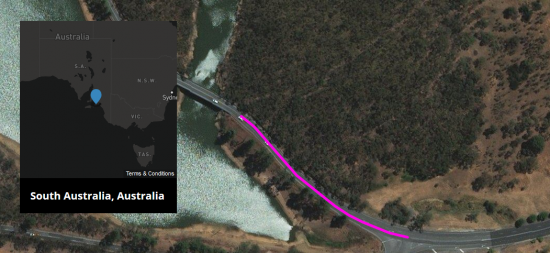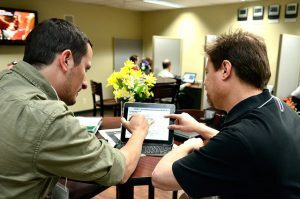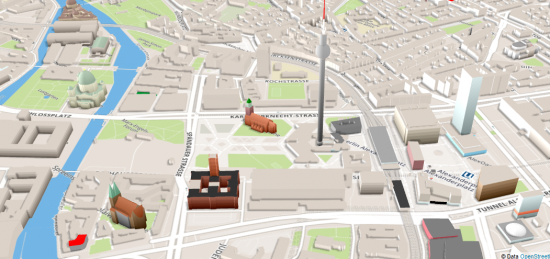How To Download Streets From Open Street Maps

What is OpenStreetMap (OSM)?
OpenStreetMap is like the Wikipedia of maps. It'southward the largest community of mappers in the world who constantly edit the geography of our changing planet.
Encounter, the trouble with Google Maps data is that information technology'due south proprietary and extremely difficult to obtain. And frequently other types of detailed data come at bang-up costs.
So we needed something open for the globe to edit. And that solution is OpenStreetMap which motivated contributors to edit this "open map" daily.
As "open" is the central philosophy to OpenStreetMap, this is as well true for data being "open". So here's instructions how you lot can download OSM information (of course at no cost).
READ MORE: 10 Free GIS Information Sources: Best Global Raster and Vector Datasets
How to Download OpenStreetMap Information?
OpenStreetMap is the data ready you lot need that you didn't know existed for public consumption. It has some of the nigh detailed data on our planet and is always updated by people similar you and me.
Turns out, there are several ways to download OpenStreetMap data. Conveniently, there's even a OSM Information Wikipedia page with all the available OSM extracts.
My suggestion is Geofabrik because it's organized past continent, country and and so province or state. Simply, navigate to your geographic area of selection and download OSM data.
And I also prefer downloading OSM data every bit shapefiles. This manner, you can open it in QGIS or ArcGIS… or any GIS software.

What types of features are in OSM Data?
After y'all download OpenStreetMap data, its format is in points, polylines and polygons. For polylines, at that place are roads, railways, and waterways. Most importantly, information technology often has the proper noun of the motorway, railway, or river. If the water feature is large enough, there is a polygon shapefile on its own.
Edifice footprints are notably impressive. For example, the OSM community has digitized close to 2 million features for infrastructure footprints in the land of New York. Each ane may or may not have a building proper noun and land type (commercial, industrial, pedagogy, etc).
Hither's a summary of OpenStreetMap data types:
- Natural and land use features like beaches, forests and farms.
- Places of interests like restaurants, hotels, police stations, churches and museums.
- Transportation features similar jitney stops, traffic signals and stop signs.
- Populated places like cities, towns, villages and localities.
Impressive to say the least, and much more you tin extract compared to global state cover.

Why are there pockets for OSM information coverage?
Sometime, somewhere… You probably grew up in a community of some sort… and you lot know it like the back of your hand. If in that location were whatsoever local diners, dental offices, or parks, you lot knew exactly where the best ones were.

And then in OpenStreetMap, you map these places out. And you tell your friends, who add fifty-fifty more than detail for that same area.
Merely yous tin can see how OpenStreetMap can become an uneven level of coverage. While some parts of the world take unprecedented detail, some are bare-bones empty.
This is why OSM often organizes "mapathons" to trace areas out in your locale. And so despite its enormous and active community, we meet large pockets of data in some locations more than others.
OpenStreetMap for Humanitarian Crisis
Subsequently the 2010 earthquake disaster in Haiti, at that place was an incredible rush in volunteer mapping. For these relief efforts, people harnessed the power of crowdsourcing in OpenStreetMap. As a consequence, at that place are frequently extremely detailed maps in disaster-stricken areas.
For example, this is especially truthful for humanitarian efforts in Haiti, Nepal, and Congo. There's a whole divide Humanitarian OpenStreetMap Team (HOT) to respond and adapt to these special circumstances. And for other humanitarian crises that occur similar ebola, earthquakes, typhoons – OpenStreetMap is the default map.
While OSM is open to the public, coverage varies from place to place. Overall, people similar yous and me are working on completeness every day.
OpenStreetMap in 3D
The growing tendency is to see our world in 3D. For example, Google Globe has revolutionized how we view and collaborate with our world. And this is all packaged in a modern web interface.

And it'southward actually no different for OpenStreetMap. The goal of OpenStreetMap 3D is to provide an interactive 3D web interface with OSM data.
They often return buildings as polyhedra, extruded footprints with apartment roofs using the SRTM DEM for base top. Just at that place are 3D interfaces that also construct edifice geometry to business relationship for gables, overhangs, and towers.
Subscribe to our newsletter:
DOWNLOAD HERE
Posted by: rosassheining.blogspot.com
Post a Comment